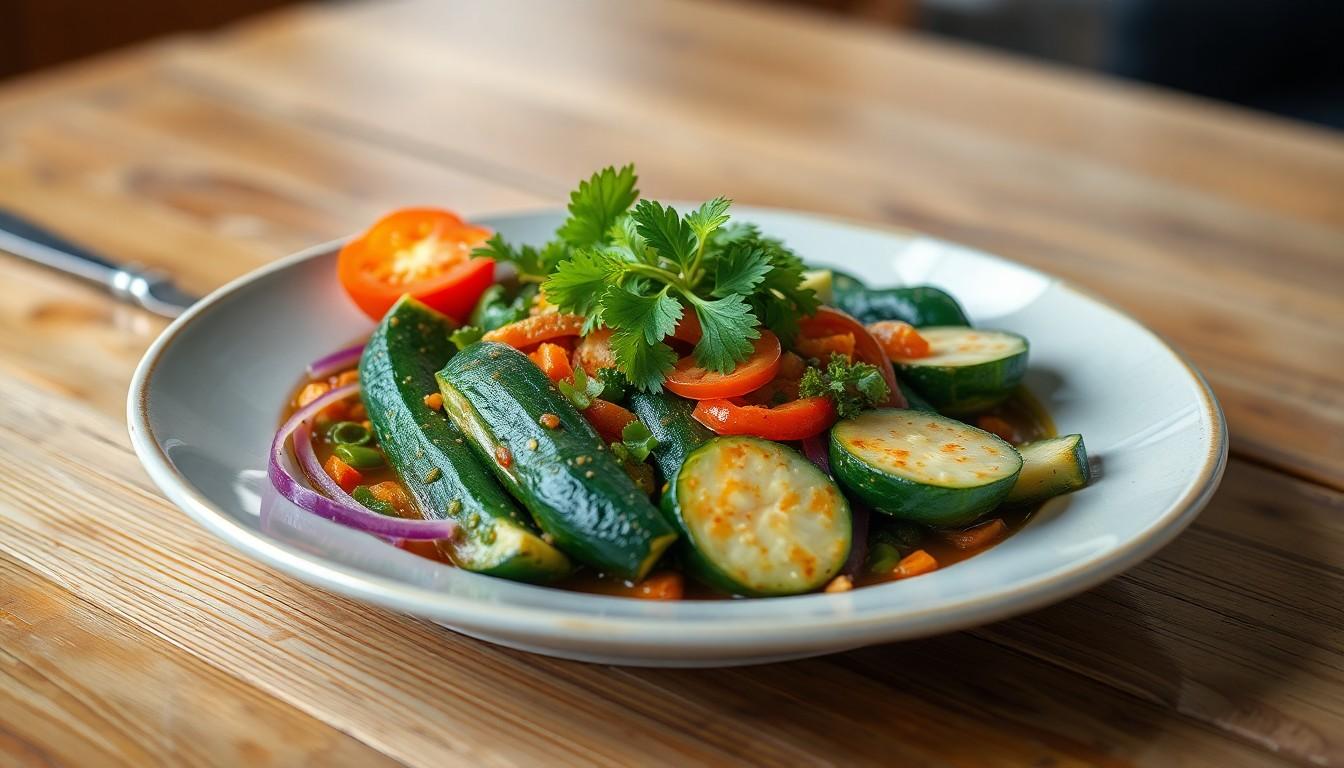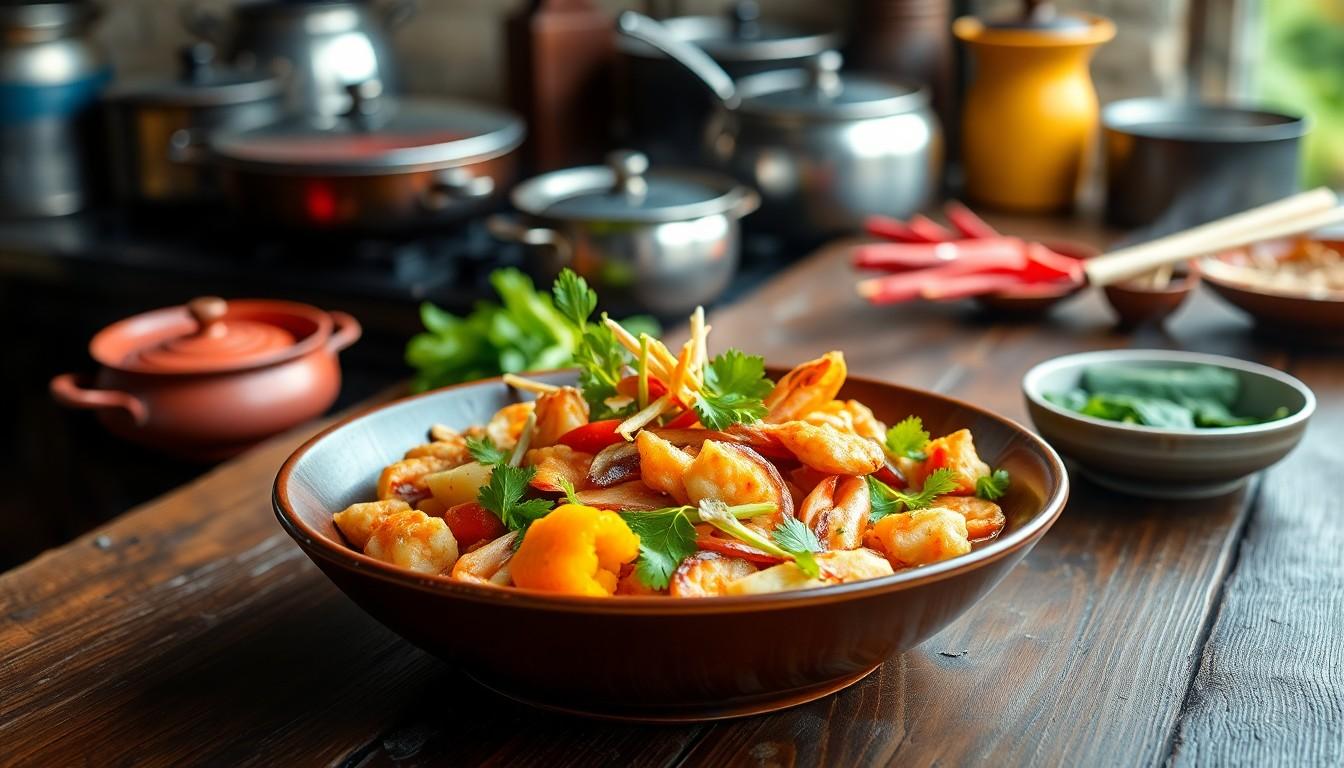Curiosity often leads to culinary adventures, and zunaong is one intriguing dish that’s caught many food lovers’ attention. But can you really eat it? Picture this: a delicious blend of flavors that dances on your taste buds while leaving you wondering if you’ve just discovered your new favorite delicacy.
Can I Eat Zunaong?
Zunaong presents a unique culinary option for adventurous eaters. This dish primarily features fresh ingredients that enhance its flavor profile. It’s important to consider the preparation method, as traditional recipes may vary across regions. Various cooking techniques, such as grilling or steaming, can influence the dish’s overall taste and texture.
Nutritional content plays a crucial role in determining whether zunaong is an appropriate choice. For example, the protein and vitamin content in the core ingredients contributes to a balanced meal. Always check for potential allergens present in the dish, especially if dining out or trying a new recipe at home.
Cultural significance also impacts the appeal of zunaong. Many communities celebrate this dish during special occasions, highlighting its importance in their culinary traditions. Sharing zunaong can foster a sense of community and shared experience among diners.
Individuals with specific dietary restrictions should approach zunaong cautiously. Consideration of vegetarian or vegan options is essential for those avoiding animal products. Possible adaptations to the recipe can accommodate various diet preferences while maintaining the essence of the dish.
Always source zunaong from reputable vendors or trusted recipes to ensure quality and safety. Ensuring freshness in ingredients is critical for both taste and health. Eating zunaong can be a delightful experience, provided that diners consider individual preferences and dietary needs.
Nutritional Value of Zunaong

Zunaong offers a rich array of nutrients that contribute to well-being. The dish’s core ingredients provide a variety of health benefits.
Vitamins and Minerals
Vitamins A, C, and B vitamins are prevalent in zunaong. These vitamins support immune function, skin health, and energy metabolism. Additionally, minerals such as iron, calcium, and potassium enhance overall bodily functions. Iron aids in oxygen transport, while calcium strengthens bones. Potassium plays a crucial role in maintaining healthy blood pressure levels. The balance of these nutrients makes zunaong not only flavorful, but beneficial for daily health.
Caloric Content
Caloric content in zunaong varies depending on preparation methods and ingredients. Typically, a serving contains around 250 to 400 calories. Grilling or steaming reduces fat content while preserving essential nutrients. The protein-packed components contribute significantly to satiety. Those seeking a light meal may focus on vegetable-heavy variations. Consuming zunaong allows individuals to enjoy a satisfying dish without excessive caloric intake.
Health Benefits of Eating Zunaong
Zunaong offers various health benefits due to its rich nutritional profile. This dish not only tantalizes the taste buds but also supports overall well-being through its vitamin and mineral content.
Antioxidant Properties
Antioxidants present in zunaong play a vital role in fighting free radicals. These compounds help protect the body from oxidative stress, which can lead to chronic diseases. Vitamin C, found abundantly in zunaong’s fresh ingredients, boosts the immune system and enhances skin health. Various herbs and vegetables commonly used in zunaong also contain flavonoids and carotenoids, further contributing to its antioxidant capacity. Incorporating zunaong into a balanced diet enables individuals to enjoy delicious flavors while promoting health.
Potential Health Risks
Potential health risks associated with zunaong depend on individual ingredients and preparation methods. Some diners might experience allergic reactions to seafood or certain spices used in the dish. Food safety is crucial; improper handling can lead to foodborne illnesses. Those with dietary restrictions must be cautious, ensuring that ingredients align with personal health needs. Additionally, excessive consumption of high-sodium sauces or toppings might contribute to health issues. Awareness of these factors allows individuals to enjoy zunaong while mitigating risks.
Culinary Uses of Zunaong
Zunaong serves various culinary purposes, making it a versatile dish enjoyed across different cultures.
Traditional Dishes
Traditional zunaong recipes showcase regional variations. Many communities grill or steam the dish, infusing it with distinct flavors. Seafood often features prominently, reflecting local availability. Herbs and spices enhance the aroma and taste, contributing to a rich cultural heritage. Celebratory meals frequently include zunaong, emphasizing its role in bringing people together. Seasonal ingredients may also be incorporated, showcasing freshness and local produce.
Modern Preparations
Modern takes on zunaong adapt to contemporary culinary trends. Many chefs experiment with fusion flavors, combining traditional techniques with new ingredients. Health-conscious preparations often focus on grilling or steaming to preserve nutritional content while reducing added fats. Plant-based adaptations cater to vegetarian and vegan diets, maintaining the dish’s fundamental characteristics without meat. Creativity in presentation adds visual appeal, making zunaong a popular choice in upscale dining establishments. Overall, innovative approaches keep zunaong relevant in today’s diverse food landscape.
Cultural Significance of Zunaong
Zunaong holds deep cultural significance in various communities, serving as a highlight during festive occasions. Celebrations often incorporate this dish, fostering unity among diners and creating memorable experiences. Special gatherings like weddings and holidays prominently feature zunaong, showcasing its role as a symbol of abundance and togetherness.
Regional variations add unique flavors and preparations to zunaong, reflecting local traditions and ingredient availability. Different cultures celebrate the dish with distinctive spices and cooking methods, which enhances its appeal and versatility.
In some communities, zunaong acts as a medium for sharing culinary heritage, where recipes are passed down through generations. Families often prepare zunaong for significant events, linking past practices to present gatherings. Chefs frequently reimagine the dish, blending traditional ingredients with modern techniques, showcasing the dish’s adaptability.
Diners may adopt vegetarian or vegan adaptations to accommodate diverse dietary needs without losing the essence of zunaong. This flexibility in preparation aligns with contemporary dietary trends and increases accessibility for various groups.
Additionally, zunaong contributes to local economies by encouraging the use of fresh produce and seafood, directly benefiting regional farmers and fishermen. Promoting local sourcing of ingredients helps sustain traditional practices and supports community livelihoods.
Zunaong’s cultural significance ranges from festive importance to economic impact, making it a cherished and relevant dish within culinary landscapes.
Conclusion
Zunaong stands out as a delicious and nutritious dish that offers a unique culinary experience. Its rich flavors and diverse preparations make it a favorite among food lovers seeking adventure. With its cultural significance and adaptability to various dietary needs, zunaong can easily fit into any meal plan.
Those interested in trying zunaong should consider sourcing it from trusted vendors or experimenting with recipes at home. This way, they can enjoy its health benefits while ensuring the dish aligns with their preferences. Whether celebrating special occasions or simply indulging in a flavorful meal, zunaong is sure to impress and satisfy.

